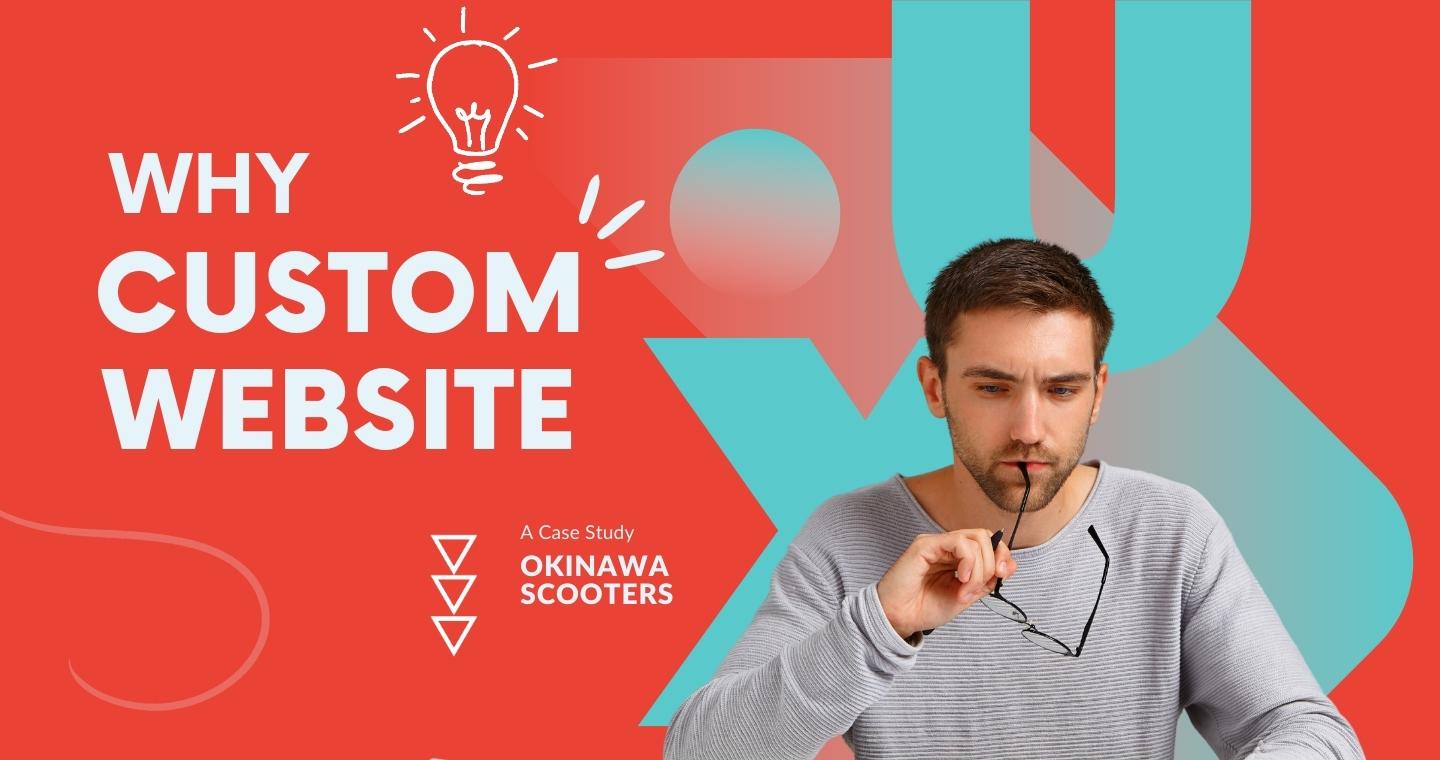Popular Tools by VOCSO
Running an eCommerce business, you know how great it is to have a well-designed website. Not only does it need to look good, but it also needs to be easy and enjoyable to use, and the grade meets your users’ needs. So what are some of the best practices for eCommerce UX design?
When it comes to eCommerce, UX design is critical in ensuring a positive customer experience. By following some simple best practices, you can ensure that your online store provides a smooth and enjoyable experience for shoppers. If you’re not using these UX best practices in your design then you’re making the biggest eCommerce website design mistakes.
Some of the most important elements of good eCommerce UX design include easy navigation, clear and concise product descriptions, helpful customer service, and well-designed checkout processes. By taking care of these basics, you’ll be well on your way to creating a successful online store.
Table of Contents
What is UX design?
To start with, UX design is the process of designing how a user interacts with a product or an eCommerce store. It involves creating a flow or the customer journey on the webshop that is easy to follow and understand while ensuring all the elements work together cohesively. The UX design principles match anything from websites and apps to physical products.
Why is UX design essential?
Good UX design is essential for any eCommerce business, as it can help to increase conversion rates and encourage customers to return. It can also help to stand out from the competition. Involving everything from the layout of your site to user interaction, UX is all about ensuring that your website or app is easy to use and provides a good experience for the user.
eCommerce UX design best practices for 2023
There are many points to consider when designing for UX, including usability, navigation, and overall appearance. By getting UX right, your eCommerce business is set up for success. So, let’s go!
1. Make sure navigation is convenient.
Consistent navigation should be one of your top priorities when designing a website. First and foremost, you must ensure that your site is easy to use. It means having a clear and consistent navigation structure, making your links easy to find and click. They say the optimal path includes up to three clicks from the Home Page to the required product. There are a few things to keep in mind when you’re designing consistent navigation:
Different ways of navigating
Visitors can easily find their way around the site and quickly and easily get to the pages they’re looking for. Some people will want to navigate the menu at the top of the page, while others prefer to use the search bar. An excellent, consistent navigation structure will consider all the possible paths and ensure that both options are always available.
As mentioned above, some people will want to use the menu, while others will prefer to use the search bar. Make sure that both options are always available.
Use consistent design elements.
Besides, using the same navigational elements in the same place on every site page. It makes it easy for visitors to find their way around and helps them quickly and easily find the pages they’re looking for. If you are looking for a resource with ready-made graphic design elements, consider such marketplaces as MasterBundles. It has a wide range of suggested design elements you can check and try.
Use the same palette of colors, fonts, and other design elements on every page. It will help create a cohesive look and feel for the site and make it easier for visitors to navigate.
Use consistent labels for navigational elements.
Use the same terms for things like the menu and search bar on every page. If you use different phrases on different pages, it can be confusing for visitors. Make it simple.
Navigational elements are always in the same place
It might seem obvious, but it’s essential to make sure that visitors can always find the menu, search bar, and other navigational elements in the same place on every page. Consistent navigation is a vital element of good website design, especially for e-commerce sites.
Ensure your UX design is mobile-responsive
In today’s world, creating a responsive website is more important than ever. It must be adaptable to different screen sizes since over 60% of eCommerce traffic comes from mobile devices. It makes it easier for customers to purchase your products and services on their mobile devices and helps improve your search engine ranking.
A responsive website is a site that automatically adjusts to fit the screen size of any device, whether it’s a smartphone, tablet, or computer. It ensures that your visitors have a great experience no matter how they access your site.
How to perform the task?
There are a few different ways to create a responsive website. For example, you can use a pre-made responsive theme, hire a web developer to create a custom responsive site, or code your responsive design.
Keep it simple and intuitive users should be able to figure out how to use your product without too much effort. Make sure your UX design is user-friendly. It means that it should be easy for users to navigate and find the information they need. With so many people using portable devices to browse the web, you must ensure your eCommerce site is UX-friendly on all platforms.
2. Use clear and concise copy
User experience is a key ranking factor for eCommerce sites. In fact, poor UX is one of the reasons why people abandon their online shopping carts. By understanding how content can influence UX, e-commerce businesses can create a more seamless and user-friendly experience for their existing and potential customers.
Why is content essential?
Content is a vital part of e-commerce, and how it influences UX can be seen in many examples. Content can serve to communicate with customers, provide information about products and services, or even entertain them. In e-commerce, content is used for a variety of purposes. First, it gives detailed information about products and services or educates them. However, it’s important to remember that the tone and style of content should always be consistent with the overall brand voice.
Examples of how content can influence UX include:
- Using persuasive language to encourage customers to make a purchase
- Including customer testimonials to build trust
- Add a Blog section with reviews or backstage stories
- Creating product descriptions that are both informative and entertaining
- Using calls to action (CTAs) to guide your users through the purchase process.
To improve UX on your eCommerce site, start by ensuring that your copy is clear and concise. Use bullet points and short sentences to make your content easy to read and scan. It means using simple language, clear headings, and avoiding long blocks of text. In addition, make sure your CTAs are visible and easy to find.
About Blog and Content Marketing
A blog is a powerful tool for eCommerce businesses. But to be effective, your blog needs to be well-written and relevant to your target audience.
Here are some tips for writing a successful eCommerce blog:
- Write about topics that are relevant to your target audience.
- Make sure your content is well-written and error-free.
- Use images, infographics, and videos to supplement your text.
- Promote your blog posts on social media and other channels.
- Monitor your analytics to see what’s working and what’s not.
It can help you build brand awareness, drive organic traffic, and generate leads and sales.
3. Optimize your search function
As e-commerce UX designers, always look for ways to optimize the search experience for your users. Here are a few design ideas that can help improve the search function on your e-commerce site:
- Use the search function: Make it quick to find and easy to use, so visitors can find what they’re looking for without hassle.
- Use autocomplete: This feature can help users find what they’re looking for more quickly and easily.
- Use filters: Let users filter results by category, price, or other criteria to help them narrow down their options. Narrow down their search and find the perfect product for their needs.
- Use sorting: Give users the ability to sort results by relevance, popularity, or other factors.
- Use images: Including images in your search results can help give users a better idea of what they’re looking for.
- Use pagination: Breaking up resulted products into pages can help users find what they’re looking for more easily.
By implementing some or all of these design ideas, you can help improve the search experience on your e-commerce site.
4. Use high-quality visuals
Visuals are important in UX design, especially for eCommerce sites. Use high-quality images and videos to show off your products and give visitors a clear idea of what they’re looking at.
The e-commerce landscape is constantly evolving, and as a result, so is the field of UX design. To be on the same page regarding the latest trends and best practices, stay up-to-date on the latest UX design ideas.
One way to get this is to use high-quality visuals. By using images and videos, you can communicate your ideas more effectively. In addition, your product photos and website design should be professional and polished. People are visual creatures, so first impressions matter. Additionally, visuals can help you break down complex concepts into manageable chunks.
5. Implement social proof
E-commerce is booming, and social proof is critical in driving sales. But what exactly is social proof, and how can you implement it on your e-commerce site?
Social proof is the idea that we are more likely to do something if we see others doing it. It’s a powerful psychological phenomenon and one that e-commerce businesses can harness to drive sales.
There are several ways to implement social proof on your e-commerce site. The most common is to use customer testimonials and reviews. You can convince potential buyers that your product or service is worthy by showcasing positive reviews from happy customers.
Another way to utilize social proof is through social media. If you have a solid social media presence, you can use it to show potential customers that others are happy with your product or service. It is especially effective if you can get influencers to endorse your product or service.
Finally, you can also use scarcity and urgency to create a sense of social proof. For example, if potential customers see that your product is in high demand and selling out quickly, they’ll be more likely to buy it before it’s gone.
So there you have it! These are just a few ways to implement social proof on your e-commerce site. Utilizing this powerful psychological phenomenon can drive more sales and conversions. Now is the time to start if you still need to use social proof on your website or app. Implementing it can help boost your UX and keep users coming back for more.
6. UX design kits
Another big UX trend for 2023 is the use of UX kits. UX kits are pre-made UX design templates that can be used to speed up the design process. They come with all the elements you need to create a high-quality UX design, including wireframes, flows, and annotations.
What to pay attention to when choosing a good one?
UX design principles are essential for any eCommerce website.
With various services that collect ready solutions for designers, you will always find professional UI-kits templates. However, if you’re considering using a UX design kit, there are a few things to remember. First of all, are the kit’s components customizable? If not, you may be limited in how much you can use the kit. Secondly, is the kit easy to use? If it’s simple enough, it may not be worth your time. Finally, does the bundle provide enough value to justify its cost? If not, you may be better off opting for another solution.
If you’re looking to get ahead of the competition in 2023, using UX kits is a great way to do it. They can help you save time and create better designs faster.
7. Test and refine your UX design
Testing and refinement are essential in UX design, especially for eCommerce sites. First, try different approaches and see what works best for your visitors. Then, take the time to refine your design based on your findings. These best practices will help you create a perfect UX design for your eCommerce site.
E-commerce is one of the most booming industries today. As a result, many businesses are venturing into e-commerce and looking for ways to test and refine their UI design. Here are some tips on how you can do just that:
1. Use analytics tools to track user behavior.
There are many e-commerce platforms and analytics tools out there that can help you track user behavior. But which ones are the best?
Here are our top three picks:
- Google Analytics: This free platform and one of the best SEO tools provide insights into how users interact with your website. Your manager can use it to track sales, conversion rates, and other essential metrics. Thus, you build your strategy and plan further activities.
- Mixpanel: This paid platform offers more advanced features than Google Analytics, such as heatmaps and funnel analysis. It’s an excellent option for businesses that want more detailed data about their customers’ behavior.
- KISSmetrics: This platform focuses on helping businesses improve their conversion rates by providing detailed data about where users drop off in the sales process.
Regardless of your platform, e-commerce analytics tools can be valuable assets in understanding your customers and growing your business.
2. A/B testing
A/B testing is a technique used in e-commerce to improve a website’s conversion rate by testing two versions of a web page against each other. By testing different versions of your site and measuring the results, you can determine what works best for your business and visitors. Thus, you can identify which version performs better in conversion rate.
A/B testing can test various web page elements, such as the headline, the call to action, or the images. By testing different web pages, e-commerce businesses can identify which version performs better and adjust their website accordingly.
Setting up your first test is relatively simple. Just decide what you want to test (it could be something as small as a button color or as big as a layout change), create two versions of the element, and then see which one performs better.
3. Get feedback from users and make changes accordingly.
One way to encourage feedback is to offer incentives for people who write feedback. For example, it could be in the form of discounts or coupons. Another way is to make it easy for people to write feedback by providing a simple form or link on your website.
This way, you can learn a lot about your online store and implement the changes in accordance with the common suggestions or select the crucial one. Refining your website’s user experience (UX) can help boost sales and keep customers returning.
How to refine your UX design?
1. Start with a wireframe.
A wireframe is a basic outline of your website’s structure and layout. It can help you visualize how users interact with your site and identify potential problems. Creating a wireframe is a crucial step in the UX design process.
2. Conduct user testing.
User testing involves having real people use your website and providing feedback. It can help you identify areas of your site that could be clearer or easier to use. User testing is an essential step in refining your UX design.
3. Analyze your site’s data.
Your website’s analytics can tell you a lot about how users interact with your site. For example, do they spend a lot of time on certain pages? Do they drop off at a certain point in the checkout process? Analyzing this data can help you identify areas of your site that need improvement.
4. Make changes based on feedback.
Once you’ve conducted user testing and analyzed your website’s data, it’s time to make some changes. For example, you may redesign your website’s navigation or add more helpful information to your product pages. Whatever changes you make, be sure to test them out before implementing them on your live site.
What will UX design trends be in 2023?
We believe UX design will continue to move away from traditional web design paradigms. It means that designers will increasingly focus on creating unique user experiences rather than replicating existing structures. But before you can start exploring UX design trends, you need to understand the basics of web design principles.
Some examples of unique user experience designs in eCommerce include:
- A site that allows users to customize their products
- A website that offers a “try before you buy” option
- A store that provides a virtual reality experience
- A service that uses AI to provide personalized recommendations
These are just a few examples of how eCommerce sites can use unique user experience designs to stand out from the competition. As a result, they can attract more customers and boost sales by offering something different and engaging.
1. Responsive design
Responsive design is one of the top web design strategies that you can use to ensure that your websites are accessible and user-friendly. This approach allows us to create websites that are optimized for different devices, screen sizes, and browsers. There will also be a continued move towards responsive design as more and more users access the internet from mobile devices. It means that designers must create websites and apps that work well on desktop and mobile devices.
2. AI-powered tools
Another trend that we anticipate is an increase in the use of AI and machine learning in UX design. This technology can be used to create personalized user experiences and will become increasingly important in the coming years.
For example, AI can be used to help personalize the user experience by providing recommendations based on past behavior. AI can also help automate tasks such as customer support or content moderation. In addition, developers and designers can apply AI-powered tools to improve the usability of search engines and analytics tools.
Overall, AI and machine learning can be used in various ways to improve the user experience. By leveraging these technologies, UX designers can create more personalized, efficient, and compelling user experiences.
3. Respect for privacy
Finally, UX designers must pay more attention to ethics and privacy. Designers must consider their work’s ethical implications as the world becomes increasingly digitized.
When selling products or services online, paying attention to ethical considerations and privacy issues is essential. Here are a few examples of things to keep in mind:
- Make sure your website is secure and that customer data is protected.
- Be transparent about how you use customer data.
- Respect customers’ privacy rights.
Attention to these issues can help create a more trusted and responsible eCommerce environment.
UX design tips to make a positive eCommerce user experience
1. Registration page
Let the purchaser checkout without making a record. Clients are not compelled to make and recall another login and secret key. Though there are advantages of making a record. It will find to create a simple and easy-to-understand Registration Page.
Tips For Registration Page
- Go for mentioning the advantages of creating an account.
- Go with a simple layout.
- Avoid asking more questions as 2 questions are enough to ask.
2. Product page images
Expansive photographs and zoom are about the closest your purchaser can get without physically touching the item. Fluffy, low-quality pictures influence the items to look low-quality as well.
Tips for product page
- Use a large image has a white background.
- Add a zoom feature to let the customers go through every detail they wish to have.
- Inform your customers about additional images or zoom features that are available.
3. Category page content
Do not keep the thin category pages on content. Keyword research can enable you to comprehend customers’ inquiries. Utilize those keywords in order to address basic inquiries concerning in respect of your product offering.
Tips For Category Page Content
- Emphasize only the buyer’s needs.
- Go for adding the semantic keywords in order to add extra support to your main keyword.
- Maintain FAQs answering the query of customers
4. Coupons you can use:
Make your customers happy while they are leaving by offering coupons. They will surely love this idea. These days most ECommerce UI/UX Design providers are following this idea and have really benefitted because of this.
5. SEO content for product listing pages
Writing SEO friendly content is important for your eCommerce SEO. SEO-friendly content fetches the wide attention of users. Let your customers and Google understand the content of your page is going according to their needs.
Tips For SEO Content
- Go for adding the most relevant as well as the lowest difficulty keywords in your page title
- Do not forget to add the h1 tag having the keywords
- Additional information must be added to the product listing Page
- Show pricing and options both clearly
- Add a product overview
6. More robust reviews
People are loving to buy the product by checking out its reviews. Do not forget to mention them on your page. It is called another way to win the trust of the customers.
7. Product page content layering
Do not go for adding too much information regarding the product. It would be right to keep it short, clear, and crisp. Customers are looking for the right level of product information for people.
Tips For Product Page Content Layering
- Add a short product summary at the top of the page. Keep it shorter and to the point.
- Make sure a border or shaded background has been added to your “action area” so it becomes easy for the people to select options and click the button.
- The ordering options must be adjacent to the top in the action area
- Do not forget to have breadcrumbs on the product pages.
- Put the discreet product details adding all about it right from the reviews, data, and so on.
8. Add a gift wrapping option to purchases
This one is next on the list. It would be a bit creative idea to add a gift-wrapping option to purchases in your store. It will lure the customers to a personal note to their gifts. Apart from it, let the customers decide if they wish to add the price information to the invoice during delivery.
9. Make the shopping cart always visible
Do not put it in a place where it would be hard to view. Make it visible as much as it can. People are having time issues these days and they want everything at their fingertips without having any trouble.
Therefore it is considered important to mention that the basket must be visible on every page of the site along with the information on a number of things added and the price.
How VOCSO can help?
We are a leading web design agency that has been designing and developing eCommerce websites since 2009. We have a team of experienced professionals who are passionate about their work and committed to providing our clients with the best possible results.
Our eCommerce website design services are tailored to meet the specific needs of each client, and we take pride in our ability to deliver high-quality work that is both creative and unique. Whether you are looking for a simple website design or a more complex eCommerce solution, we are confident that we can exceed your expectations.
Our affordable e-commerce website packages make it easy to get started and our team will work closely with you to ensure that your vision is brought to life.
Conclusion
As we’ve seen, UX design is vital to any eCommerce business. By following the seven best practices we’ve outlined, you can create an enjoyable and practical user experience.
By designing a great user experience, you’ll surely see a positive impact on your bottom line. So what are you waiting for? Get started today and see the difference for yourself!
























